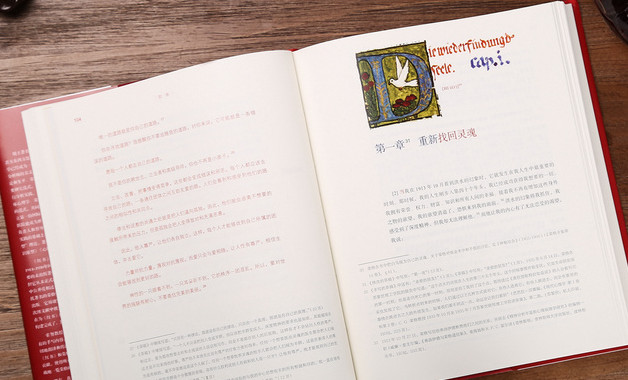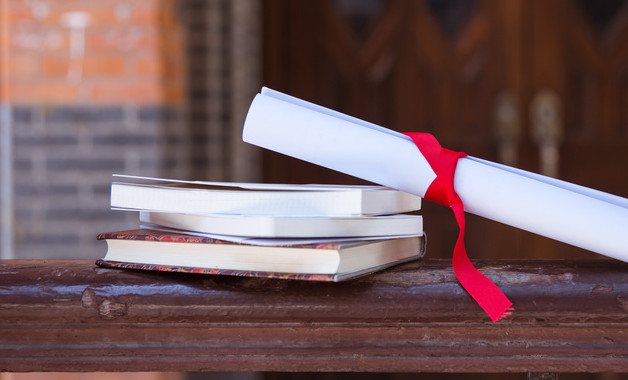
第1篇 小学小升初英语十个知识点总结
1、动词be(is,am,are)的用法
我(i)用am, 你(you)用are,is跟着他(he),她(she),它(it)。单数名词用is,复数名词全用are。变否定,更容易,be后not加上去。变疑问,往前提,句末问号莫丢弃。还有一条须注意,句首大写莫忘记。
2.this,that和it用法
(1)this和that是指示代词,it是人称代词。
(2)距离说话人近的人或物用this, 距离说话人远的人或物用that。如: this is a flower. 这是一朵花。(近处)
that is a tree. 那是一棵树。(远处)
(3)放在一起的两样东西,先说this, 后说that。如:
this is a pen. that is a pencil. 这是一支钢笔。那是一支铅笔。
(4)向别人介绍某人时说this is…, 不说that is…。如:
this is helen. helen, this is tom. 这是海伦,海伦,这是汤姆。
(5)this is 不能缩写, 而that is可以缩写。如:
this is a bike. that’s a car. 这是一辆自行车。那是一辆轿车。
(6)打电话时,介绍自己用this, 询问对方用that。如:
-hello! is that miss green? 喂,是格林小姐吗?
-yes, this is. who’s that? 是的,我是,你是谁?
注意:虽然汉语中使用“我”和“你”,但英语中打电话时绝不可以说:i am…, are you…?/who are you?
(7)在回答this或that作主语的疑问句时, 要用it代替this或that。如:
①-is this a notebook? 这是笔记本吗?
-yes, it is. 是的,它是。
②-what’s that? 那是什么?
-it’s a kite. 是只风筝。
3.these和those用法
this, that, these和those是指示代词,these是this的复数形式,指时间,距离较近的或下面要提到的人或事;those是that的复数形式,指时间、距离较远或前面已经提到过的人或事物。
①this is my bed. that is lily’s bed. 这是我的床。那是莉莉的床。
②these pictures are good. 那些画很好。
③ are those apple trees? 那些是苹果树吗?
在回答主语是these或those的疑问句时,通常用they代替these或those以避免重复。如:
④are these/those your apples? 这些(那些)是你的苹果吗?
yes, they are. 是的,他们是。
4.名词+’s所有格
单数名词后直接加 “ ’s ”:
jim’s coat 吉姆的外套 jeff’s mother杰夫的妈妈
以s结尾的复数名词,只加“’”
teachers’ day教师节 the twins’ books双胞胎的书
不以s结尾的不规则的名词复数,加“ ’s ”
children’s day 儿童节 men’s shoes男式鞋
表示两者共同拥有时,只在最后一个名词后加’s
lucy and lily’s mother 露茜和莉莉的妈妈(共同的妈妈,一个妈妈)
表示两者各自拥有时,要在每个名词后加’s
lucy’s and kate’s rooms 露茜和凯特的房间(各自的房间,两间房子)
5.there be句型
(1)there be句型主要用以表达“某处(某时)有某人(某物)。”其基本结构为“there be+某物(某人)+某地(某时)”其中there是引导词,没有词义;主语是be后面的名词, be是谓语动词,在一般现在时中be只用is和are两种形式。下面这首歌诀可帮你巧记there be句型结构:
there be放句首,主语跟在后。地、时放句末,强调置前头。如:
there is a book on the desk.
有时为了强调地点,也可把介词短语放在句首。如:
on the desk there is a book.
(2)there be句型中的be动词如何确定呢?请先看看下面这首歌诀:
be动词,有三个,am,is还有are。“there be”真特别,不留am只留俩,那就是is还有are。要用is还是are,须看其后的名词是单数还是复数。若是单数或不可数名词用is,否则就用are。如:
①there is a tree behind the house.
②there is some water(水)in the bottle(瓶子).
③there are some pears in the box.
--------------------------------------------------------------------------------
(3)注意:如果“be”后的主语是由and连接的两个或两个以上的名词,那么be的形式要遵循“远亲不如近邻”的原则。也就是说,“be”的形式是由与它最近的那个名词来确定的。若那个名词是单数或不可数名词要用is,是复数就用are。如:
①there is a book and some pens on the floor.
②there are some pens and a book on the floor.
6.like一词的用法
like用作及物动词,译为“喜欢”。
(1)后接名词或代词,表示喜欢某人或某物。如:
i like the baby very much. 我非常喜欢这个小孩。
(2)后接动名词(v. -ing),表示“喜欢做某事”,着重于习惯、爱好。如:
tom likes playing football. 汤姆喜欢踢足球。
(3)后接动词不定式(to do ),表示“偶尔地喜欢做某事”,着重于某次具体的行为。如:
i like reading, but i like to watch tv this evening. 我喜欢读书,但我今晚想看电视。
7.句子单数变复数,注意以下五要素
(1)主格人称代词要变成相应的复数主格人称代词,即i→we, you→you,she,he,it→ they。
如:she is a girl. →they are girls.
(2)am,is要变为are。如:
i’m a student. →we are students.
(3)不定冠词a,an要去掉。如:
he is a boy. →they are boys.
(4)普通单数名词要变为复数形式。如:
it is an apple. →they are apples.
(5)指示代词this,that要变为these,those。如:
this is a box. →these are boxes.
8.英语日期的表示法
英语中月份和星期名称都是专有名词,它们的首字母必须大写,并且前面无需用冠词。
用英语表示日期,其顺序为月+日+年,日和年之间需用逗号隔开。如:august 2nd,2003(2003年8月2日)。也可以用日+月+年来表示。如:10th may,2003(2003年5月10日)英语日期前介词的使用:若指在哪一年或哪一月,则用介词in,若具体到某一天,则需用介词on。
9.时间的表达法
(1) 直读式,即直接读出时间数字
7: 05 seven five 8:16 eight sixteen
(2) 过、差式,即几点差几分,几点过几分。(以30分为分界线)
1:25 twenty-five past one 2:30 half past two
3:43 seventeen to four 4:38 twenty-two to five
(3)12小时制
6:00 a.m. 上午6点 8:20 p.m. 下午8点20分
(4)24小时制
13:00 13点钟 22:15 22点15分
(5)15分可用quarter
4:15 a quarter past four 5:45 a quarter to six
(6)时间前通常用at.
at 5 o’clock at 7:30 p.m.
10. want用法
(1)想干什么用want to do sth
they want to join the sports club. 他们想加入运动俱乐部。
(2)第三人称单数作主语,want要作变化
①he wants to play basketball.
②li xia wants to play the piano.
(3)变疑问句,否定句要借助助动词do或does.
①-do you want to play soccer ball ? -yes , i do . / no , i don’t.
②-does he want to go home by bus ? -yes , he does . / no , he doesn’t

第2篇 小学小升初英语语法总结及习题名词复数规则
名词复数规则
1. 一般情况下,直接加-s,如:
book-books, bag-bags, cat-cats, bed-beds
2. 以s. x. sh. ch结尾,加-es,如:
bus-buses, box-boxes, brush-brushes, watch-watches
3. 以'辅音字母+y'结尾,变y为i, 再加-es,如:
family-families, strawberry-strawberries
4. 以'f或fe'结尾,变f或fe为v, 再加-es,如:
knife-knives
5. 不规则名词复数:
man-men
woman-women
policeman-policemen
policewoman-policewomen
mouse-mice
child-children
foot-feet
tooth-teeth
fish-fish
people-people
chinese-chinese
japanese-japanese
小练习:
写出下列各词的复数
i _________him _________this ___________her ______
watch _______child _______photo ________diary ______
day________ foot________ book_______ dress ________
tooth_______ sheep ______box_______ strawberry _____
thief _______yo-yo ______ peach______ sandwich ______
man______ woman_______ paper_______ juice___________
water________ milk________ rice__________ tea__________

第3篇 小学小升初英语语法代词总结及习题
人称代词和物主代词
1、人称代词主格和宾格的区别:主格通常位于句中第一个动词之前(有时候位于than 之后),宾格一般位于动词或介词之后。
2、物主代词形容词性与名词性的区别:形容词性用时后面一般要带上名词,名词性则单独使用,后面不带名词。
人称代词 物主代词
主格 宾格 形容词性 名词性
我 i me 我的 my mine
你,你们 you you 你的,你们的 your yours
他 he him 他的 his his
她 she her 她的 her hers
它 it it 它的 its its
我们 we us 我们的 our ours
他(她,它)们 they them 他(她,它)们的 their theirs
练习
一.用所给词的适当形式填空
1. that is not _________ kite. that kite is very small, but _________ is very big. ( i )
2. the dress is _________. give it to _________. ( she )
3. is this _________ watch? (you) no, it's not _________ . ( i )
4. _________ is my brother. _________ name is jack. look! those stamps are _________. ( he )
5. _________ dresses are red. (we) what colour are _________? ( you )
6. here are many dolls, which one is _________ ? ( she )
7. i can find my toy, but where's _________? ( you )
8. show _________ your kite, ok? (they)
9. i have a beautiful cat. _________name is mimi. these cakes are _________. ( it )
10. are these _________ tickets? no, _________ are not _________. _________ aren't here. ( they )
11. shall _________ have a look at that classroom? that is _________ classroom. ( we )
12. _________ is my aunt. do you know _________ job? _________ a nurse. ( she )
13. that is not _________ camera. _________is at home. ( he )
14. where are _________? i can't find _________. let's call _________ parents. ( they )
15. don't touch _________. _________ not a cat, _________ a tiger!
16. _________ sister is ill. please go and get _________. ( she )
17. _________ don't know her name. would you please tell _________. ( we )
18. so many dogs. let's count _________. ( they )
19. i have a lovely brother. _________ is only 3. i like _________ very much. ( he )
20. may i sit beside _________? ( you )
21. look at that desk. those book are on _________. ( it )
22.the girl behind _________ is our friend. (she )
二、用am, is, are 填空
1. i ______ a boy. ______ you a boy? no, i _____ not.
2. the girl______ jack's sister.
3. the dog _______ tall and fat.
4. the man with big eyes _______ a teacher.
5. ______ your brother in the classroom?
6. where _____ your mother? she ______ at home.
7. how _______ your father?
8. mike and liu tao ______ at school.
9. whose dress ______ this?
10. whose socks ______ they?
11. that ______ my red skirt.
12. who ______ i?
13. the jeans ______ on the desk.
14. here ______ a scarf for you.
15. here ______ some sweaters for you.
16. the black gloves ______ for su yang.
17. this pair of gloves ______ for yang ling.
18. the two cups of milk _____ for me.
19. some tea ______ in the glass.
20. gao shan's shirt _______ over there.
21. my sister's name ______nancy.
22. this ______ not wang fang's pencil.
23. ______ david and helen from england?
24. there ______ a girl in the room.
25. there ______ some apples on the tree.
26. _______ there any kites in the classroom?
27. _______ there any apple juice in the bottle?
28. there _______ some bread on the plate.
29. there _______ a boy, two girls, three men and ten women in the park.
30. you, he and i ______ from china.

第4篇 小学小升初英语代词语法总结及习题
人称代词和物主代词
1、人称代词主格和宾格的区别:主格通常位于句中第一个动词之前(有时候位于than 之后),宾格一般位于动词或介词之后。
2、物主代词形容词性与名词性的区别:形容词性用时后面一般要带上名词,名词性则单独使用,后面不带名词。
人称代词 物主代词
主格 宾格 形容词性 名词性
我 i me 我的 my mine
你,你们 you you 你的,你们的 your yours
他 he him 他的 his his
她 she her 她的 her hers
它 it it 它的 its its
我们 we us 我们的 our ours
他(她,它)们 they them 他(她,它)们的 their theirs
练习
一.用所给词的适当形式填空
1. that is not _________ kite. that kite is very small, but _________ is very big. ( i )
2. the dress is _________. give it to _________. ( she )
3. is this _________ watch? (you) no, it's not _________ . ( i )
4. _________ is my brother. _________ name is jack. look! those stamps are _________. ( he )
5. _________ dresses are red. (we) what colour are _________? ( you )
6. here are many dolls, which one is _________ ? ( she )
7. i can find my toy, but where's _________? ( you )
8. show _________ your kite, ok? (they)
9. i have a beautiful cat. _________name is mimi. these cakes are _________. ( it )
10. are these _________ tickets? no, _________ are not _________. _________ aren't here. ( they )
11. shall _________ have a look at that classroom? that is _________ classroom. ( we )
12. _________ is my aunt. do you know _________ job? _________ a nurse. ( she )
13. that is not _________ camera. _________is at home. ( he )
14. where are _________? i can't find _________. let's call _________ parents. ( they )
15. don't touch _________. _________ not a cat, _________ a tiger!
16. _________ sister is ill. please go and get _________. ( she )
17. _________ don't know her name. would you please tell _________. ( we )
18. so many dogs. let's count _________. ( they )
19. i have a lovely brother. _________ is only 3. i like _________ very much. ( he )
20. may i sit beside _________? ( you )
21. look at that desk. those book are on _________. ( it )
22.the girl behind _________ is our friend. (she )
二、用am, is, are 填空
1. i ______ a boy. ______ you a boy? no, i _____ not.
2. the girl______ jack's sister.
3. the dog _______ tall and fat.
4. the man with big eyes _______ a teacher.
5. ______ your brother in the classroom?
6. where _____ your mother? she ______ at home.
7. how _______ your father?
8. mike and liu tao ______ at school.
9. whose dress ______ this?
10. whose socks ______ they?
11. that ______ my red skirt.
12. who ______ i?
13. the jeans ______ on the desk.
14. here ______ a scarf for you.
15. here ______ some sweaters for you.
16. the black gloves ______ for su yang.
17. this pair of gloves ______ for yang ling.
18. the two cups of milk _____ for me.
19. some tea ______ in the glass.
20. gao shan's shirt _______ over there.
21. my sister's name ______nancy.
22. this ______ not wang fang's pencil.
23. ______ david and helen from england?
24. there ______ a girl in the room.
25. there ______ some apples on the tree.
26. _______ there any kites in the classroom?
27. _______ there any apple juice in the bottle?
28. there _______ some bread on the plate.
29. there _______ a boy, two girls, three men and ten women in the park.
30. you, he and i ______ from china.

第5篇 小学小升初英语语法总结及习题一般过去时
一般过去时 part b
过去时综合练习(1)
name ____________ no. ______ date __________
一、 用动词的适当形式填空
1. it ______ (be) ben's birthday last friday.
2. we all ______ (have) a good time last night.
3. he ________ (jump) high on last sports day.
4. helen ________ (milk) a cow on friday.
5. she likes ______ newspapers, but she ______ a book yesterday. (read)
6. he _______ football now, but they _______ basketball just now. (play)
7. jim's mother _________ (plant) trees just now.
8. _______ they ________ (sweep) the floor on sunday? no, they _____.
9. i _______ (watch) a cartoon on monday.
10. we ___________ (go) to school on sunday.
二、 中译英
1. 我们上周五看了一部电影。
_________________________________________________________
2. 他上个中秋节走亲访友了吗?是的。
_________________________________________________________
3. 你们上个儿童节做了什么?我们参观了动物园。
_________________________________________________________
4. 你上周在哪儿?在野营基地。
_________________________________________________________
过去时综合练习(2)
name ____________ no. ______ date __________
一、 用动词的适当形式填空
1. it _____ (be) the 2nd of november yesterday.
mr white ________ (go) to his office by car.
2. gao shan ________ (put) the book on his head a moment ago.
3. don't ______ the house. mum _______ it yesterday. (clean)
4. what ____ you ______ just now? i _______ some housework. (do)
5. they _________ (make) a kite a week ago.
6. i want to ______ apples. but my dad _______ all of them last month. (pick)
7. _______ he ______ the flowers this morning? yes, he _____. (water)
8. she ____ (be) a pretty girl. look, she _____ (do) chinese dances.
9. the students often _________ (draw) some pictures in the art room.
10.what ______ mike do on the farm? he ________ cows. (milk)
二、中译英
1. 他的朋友在照看他的弟弟。
_________________________________________________________
2. 去年端午节我们没去看了龙舟比赛。
_________________________________________________________
3. 他在音乐课上拉小提琴了吗?不,没有。
_________________________________________________________

第6篇 小学英语小升初语法总结:状语从句
什么是状语从句?
状语就是在一句话中,表达该句的时间,地点,方式,原因,条件等的成分。 那么状语从句就是用一个从句,表示状语。
小升初考试需要掌握的状从:
一般可分为九大类,分别表示时间、条件、结果、目的、让步、地点、原因、比较和方式。
难点:
a.掌握连词
b.注意时态,特别是时间,条件状语从句中的主将从现,主从时态一致原则
(1)时间状语从句
连词:when,while ,as soon as , not…until , before,after,since,etc.
注意:主将从现,主从时态一致
eg.:i will visit my good friend when i have time.
someone knocked at the door when/while i was sleeping.
he didn't go to bed until he finished his homework.
(2)地点状语从句
连词:where, wherever, anywhere, everywhere,nowhere
you can go anywhere you like.
(3)条件状语从句
连词: if,unless除非, as/so long as只要,once一旦
eg.:if it doesn't rain tomorrow,we will go there by bike.
you'll fail in the exam unless you work harder.
(4)结果状语从句:
连词: so taht,so+adj./adv.+that, such+n.+that
eg.: she was so angry that she couldn't speak.
she worked hard so that everything got ready by 6 o'clock.
(5)目的状语从句
连词: so that,in order that
eg.: please speak more slowly so that we can make full notes.
(6)让步状语从句
连词: although, though, as, even though/if, whether…or not, no matter+疑问词/疑问词-ever
(7)原因状语从句
连词:because, since/now that, as
语气的强弱:because,since次之,as最弱
(8)比较状语从句
连词:as…as, not as/so…as, …than
(9)方式状语从句
连词:as,as if/though好像

第7篇 小学小升初英语语法总结:状语从句
什么是状语从句?
状语就是在一句话中,表达该句的时间,地点,方式,原因,条件等的成分。 那么状语从句就是用一个从句,表示状语。
小升初考试需要掌握的状从:
一般可分为九大类,分别表示时间、条件、结果、目的、让步、地点、原因、比较和方式。
难点:
a.掌握连词
b.注意时态,特别是时间,条件状语从句中的主将从现,主从时态一致原则
(1)时间状语从句
连词:when,while ,as soon as , not…until , before,after,since,etc.
注意:主将从现,主从时态一致
eg.:i will visit my good friend when i have time.
someone knocked at the door when/while i was sleeping.
he didn't go to bed until he finished his homework.
(2)地点状语从句
连词:where, wherever, anywhere, everywhere,nowhere
you can go anywhere you like.
(3)条件状语从句
连词: if,unless除非, as/so long as只要,once一旦
eg.:if it doesn't rain tomorrow,we will go there by bike.
you'll fail in the exam unless you work harder.
(4)结果状语从句:
连词: so taht,so+adj./adv.+that, such+n.+that
eg.: she was so angry that she couldn't speak.
she worked hard so that everything got ready by 6 o'clock.
(5)目的状语从句
连词: so that,in order that
eg.: please speak more slowly so that we can make full notes.
(6)让步状语从句
连词: although, though, as, even though/if, whether…or not, no matter+疑问词/疑问词-ever
(7)原因状语从句
连词:because, since/now that, as
语气的强弱:because,since次之,as最弱
(8)比较状语从句
连词:as…as, not as/so…as, …than
(9)方式状语从句
连词:as,as if/though好像












